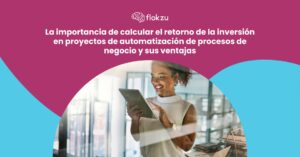Reengineering your business procedures is a critical step that can significantly amplify your company’s efficiency and productivity. However, this transition can also be fraught with potential pitfalls. This article, brought to you by Flokzu, a leader in business process automation (BPM), aims to guide you through the common blunders to avoid during the reengineering of your procedures.
1. Neglecting to Analyze the Current Process
One of the most common mistakes businesses make in process reengineering is neglecting to scrutinize their existing procedures. This analysis is crucial to identify inefficiencies and areas for improvement, and to set clear goals for the reengineering process.
2. Ignoring Employee Input
Employees are the ones who interact with these processes daily; their input is invaluable. Ignoring their insights can lead to a disconnect between the reengineered process and the actual needs of the company.
3. Inadequate Training
Any change in business procedures requires thorough training. Inadequate training can lead to confusion and errors, negating the potential benefits of process reengineering.
4. Lack of Clear Communication
Clear communication is vital during the reengineering process. All stakeholders should be kept informed about changes, potential impacts, and the expected benefits to ensure smooth transition and buy-in.
5. Avoiding Automation
One of the most impactful ways to improve business procedures is through automation. Avoiding automation or sticking with outdated automation platforms can limit your company’s growth and efficiency.
The Solution: Flokzu
Flokzu, with its state-of-the-art business process automation (BPM) platform, provides a robust solution for businesses looking to reengineer their procedures. Flokzu offers a seamless, user-friendly interface that simplifies the automation process, making it accessible to everyone in your organization.
Conclusion
Reengineering your business procedures can seem daunting, but with careful planning, clear communication, and the right tools, it can be a game-changer for your company. Flokzu is committed to helping businesses navigate this process effectively.
To learn more about how Flokzu can help your business avoid these common blunders and streamline your procedures, we invite you to schedule a free consultancy. Our expert team will provide a personalized assessment of your current procedures and demonstrate how Flokzu can help transform your business. Don’t let these common blunders hinder your progress, let Flokzu guide you towards efficient, automated processes.




























